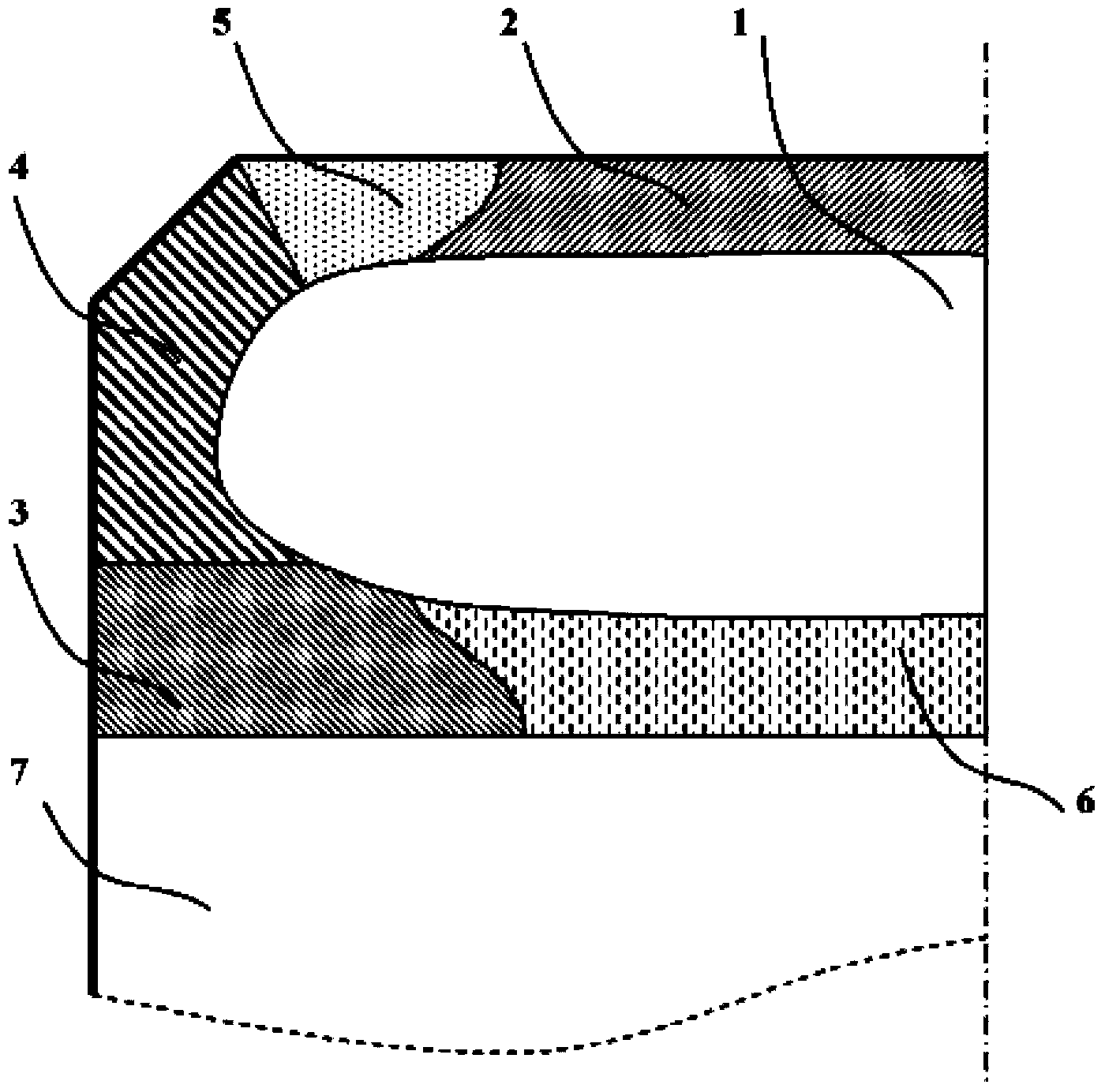A superhard structure and method of making same
A super-hard structure, polycrystalline super-hard technology, applied in the field of wear-resistant components, can solve the problems of reducing the service life of the drill bit, tool failure, PCD breakage, etc.
- Summary
- Abstract
- Description
- Claims
- Application Information
AI Technical Summary
Problems solved by technology
Method used
Image
Examples
example 1
[0116] manufacturing based on Figure 2a , Figure 2b Example of a PCD cutter. Figure 15 is a graphic of the specific design used by these knives. The final PCD section thickness was 2.2 mm, bonded to a tungsten carbide, 13% by weight cobalt hard metal substrate, and a length of 13.8 mm. The straight cylindrical tool has a diameter of 16 mm, an overall length of 16 mm, and a flat interface between the PCD facet and the carbide substrate.
[0117] refer to Figure 15 , different PCD material volumes 1 to 6 were fabricated using tape casting manufacturing techniques known in the art. Green state disks or washers of six different diamond powders were fabricated using a water-soluble binder. In each case, the disc and gasket are assembled to form a Figure 15 The geometry is housed in a refractory metal cup, which is subsequently fixed on a cylinder of pre-sintered tungsten carbide / cobalt hard metal. These assemblies are then vacuum degassed in the furnace at a temperature...
example 2
[0146] manufacturing based on Figure 7 Example of a PCD cutter. Figure 17 is a graphic of the specific design used by these knives. As in Example 1, the final PCD facet thickness was 2.2 mm, bonded to tungsten carbide, a cobalt hard metal substrate with a weight ratio of 13%, and a length of 13.8 mm. The straight cylindrical tool has a diameter of 16mm, an overall length of 16mm, and has a flat interface between the PCD facet and the carbide substrate.
[0147] In this example, PCD facets are fabricated from volumes of only two different PCD materials. The PCD material with the largest coefficient of thermal expansion forms a disk at Figure 17 Marked as 1, through Figure 17 The volume of PCD material with a lower coefficient of thermal expansion, marked 12, is partially separated from the base interface, top surface and circumferential free surface of the PCD cut plane. The discontinuity in zone 12, through which the material forming disc 1 extends to the peripheral f...
example 3
[0164] according to Figure 18a Manufactures PCD cutting tools, which are based on Figure 5 A specific design of an embodiment where the PCD facets are fabricated from three volumes of different PCD materials. The PCD material with the highest coefficient of thermal expansion and the highest metal content forms a disc at Figure 16a Marked as 13, its center is located at the base interface and arranged symmetrically around the central axis of the tool. Material volume made from PCD material with minimum thermal expansion coefficient and metal content, at Figure 18a 15 , which extends across the top free surface of the PCD facet and most of the peripheral free surface, except for a portion forming a discontinuity through which the PCD material of maximum coefficient of thermal expansion extends (not shown). and Figure 18a The PCD material (labeled 14 ) made of a material with an intermediate coefficient of thermal expansion and metal content occupies the volume separatin...
PUM
| Property | Measurement | Unit |
|---|---|---|
| Coefficient of linear thermal expansion | aaaaa | aaaaa |
| Elastic modulus | aaaaa | aaaaa |
| Coefficient of linear thermal expansion | aaaaa | aaaaa |
Abstract
Description
Claims
Application Information
 Login to View More
Login to View More - R&D Engineer
- R&D Manager
- IP Professional
- Industry Leading Data Capabilities
- Powerful AI technology
- Patent DNA Extraction
Browse by: Latest US Patents, China's latest patents, Technical Efficacy Thesaurus, Application Domain, Technology Topic, Popular Technical Reports.
© 2024 PatSnap. All rights reserved.Legal|Privacy policy|Modern Slavery Act Transparency Statement|Sitemap|About US| Contact US: help@patsnap.com










